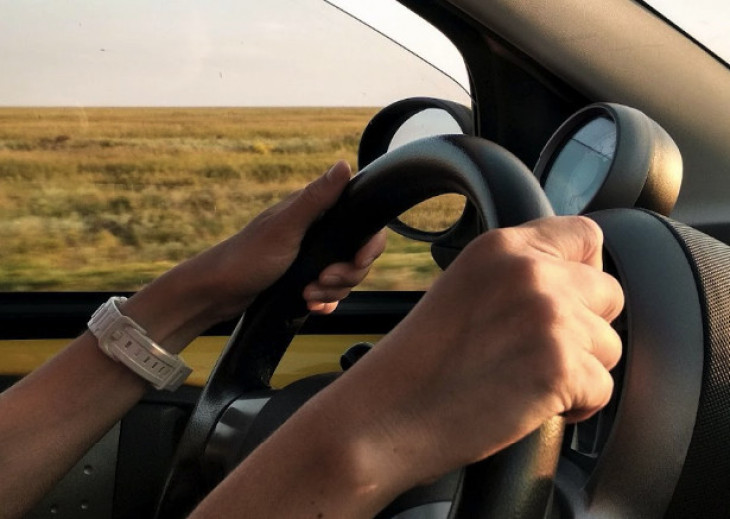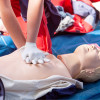By The Acclaim Team on 22nd June 2022 in News
For any learner driver, the idea of taking your practical driving test can seem daunting, especially with so much practice in preparation for your test. When your examiner monitors your driving, they’ll be looking out for different categories of faults which are classified as dangerous, serious or general driving faults.
In your driving test, you can receive 15 minors and still pass your test. However, any serious or dangerous fault on the test would lead to a failure. You could also be unsuccessful if you have an accumulation of minor driver faults in the same category on the marking sheet. Fortunately, with the right instructor and plenty of practice, you’ll be on your way to passing your DVSA driving test in no time.
In this guide, we have compiled a list of some common driving test faults, with vital information on how best you can avoid making these mistakes!
Observation at Junctions
The most common driving test failure is a lack of observation at junctions. Failing to look properly at junctions is the most dangerous test fault, and also the largest cause of accidents in Britain.
It’s vital to give a thorough look around before emerging from a junction and joining a road until it is safe enough for you to do so.
Turning Right at Junctions
Right turns at junctions are some of the most nerve-wracking manoeuvres of any driving test. With that being said, they are perfectly safe if you take the time to assess the situation and pay close attention to those around you.
Your examiner will be looking out for a number of issues, including lack of observation, positioning over centre lines and, most importantly, pulling out when it is unsafe to do so.
Some junctions are trickier than others, so it’s important to take your time, stay alert and pay close attention to the road signs and markings. If you’re not very confident with this aspect of driving, practice, practice and practice again.
Using Mirrors to Change Direction
When changing direction, using your mirrors is vital in being aware of what is behind and both sides of you. Using your mirrors is crucial in good observation, and therefore, it’s a skill that drivers must learn.
If you fail to check your mirrors when changing direction, you may result in a minor or major - it depends on whether your lack of observation caused a potential danger to you and others around you.
Frequently check your mirrors so that you are always aware of what is around you. Be sure to use them in good time before signalling, changing direction or changing your speed.
Steering Control
Keeping control of the vehicle at all times is vital for the safety of you, passengers, other motorists and pedestrians.
Your examiner will be monitoring you throughout the test to ensure you are in control when steering. This will include looking out for instances when you release the steering wheel to spin back after steering, or your hands are off the steering wheel.
Moving Off Safely
Failing to look properly is the most common contributory factor in vehicle accidents.
While this may be surprising to some, you will not get a minor if you hold up traffic while waiting for a safe opportunity to move off. With that being said, you can receive a major if you miss opportunities to safely pull out.
If you’re unsure when to pull out of a junction or roundabout, try to keep your cool and move off the next time it’s safe to do so.
Keeping Control When Moving Off
Not only is it important to move off safely with full awareness of what is around you, but you should also stay in full control of the car while preparing to move off.
This means that stalling, rolling backwards, rolling forwards, moving away too quickly or even losing slight control of the steering wheel can result in your examiner marking you down. Take your time and relax when moving off. If you are prone to stalling or rolling on hills, we will take the time to ensure your clutch control is fully up to speed!
Responding to Road Signs
Your examiner will be monitoring your awareness of road signs, markings, lanes, crosses and junctions. Common errors include driving in a bus lane at prohibited times, stopping over box junctions, and not adhering to speed limits.
We understand that it may seem like you have too many things to concentrate on at once as a new driver. However, this comes with practice and patience. A great tip to become more aware of road signs and markings around you is to pay close attention when you aren’t behind the wheel. It’s also crucial that you are aware of the Highway Code and take the time to be confident with this.
Driving Position
Something you may forget about is your driving position, in particular, how close you are to kerbs or if you are driving too close to the middle of the road. Try to maintain a steady course and stay aware of your positioning.
Control When Reverse Parking
During your test, you will be asked to demonstrate a driving manoeuvre chosen by your examiner. Poor steering, bumping the kerb, stalling, poor clutch control and even excessive acceleration are all things that your examiner will be looking out for.
Throughout your manoeuvre, remain calm and keep in full control behind the wheel, taking observations at all times. You should also take your time and demonstrate the manoeuvre at an appropriate speed.
Even some of the best drivers struggle with basic driving test manoeuvres, including bay parking, reverse bay parking, parallel parking and an emergency stop. Perfecting the manoeuvres is down to practice!
Stalling
One of the most common mistakes any driver can make is stalling. If you do stall during your driving test, don’t panic! Stalling is highly unlikely to warrant a major fault - as long as it doesn’t cause a danger to others around you.
If you do stall, take a deep breath, regain composure, pull your handbrake back up and start the car again. Avoid rushing to set off after stalling, as you should always check it is safe to move off when the road is clear.
Driving Speed
You might be tempted to drive slow and steady during your driving test to prove you are a safe driver. However, going unnecessarily slow can actually land you with a minor (or even major) fault. Your examiner will want to know that you are aware of speed limits, so try to stick to speed limits and never exceed them.
Appropriate use of speed is not just about staying below the speed limit but judging what is right for what is going on around you. Of course, there may be instances when you have to use your own judgement on dropping your speed, for example, when weather conditions are harsh.
Practice Makes Perfect
Pass your driving test with confidence and be on the road in no time with our industry-leading driving instructors. All of our instructors are super friendly, and you can either book quickly and easily online or call the office, and one of the team will talk you through your options.
At Acclaim Driving, we are always here to help with your driving test needs. Be sure to reach out on 0800 838 440 if you have any questions about passing your driving test. Book your driving lesson now or get in touch for more information.




